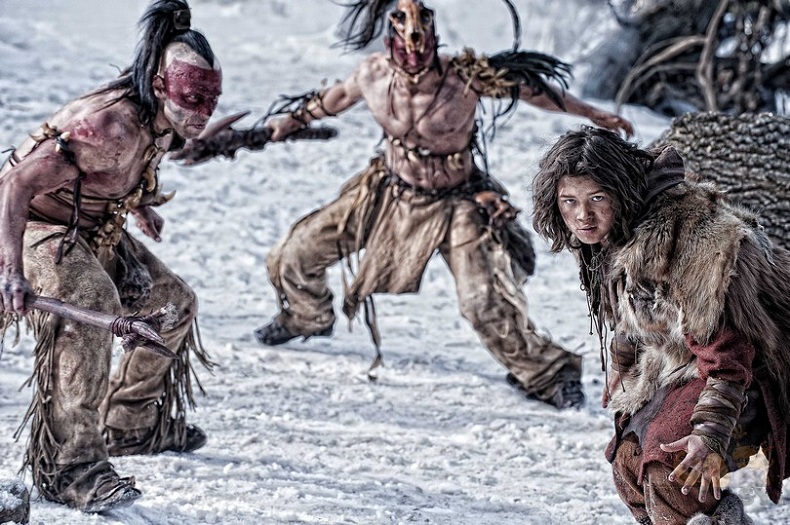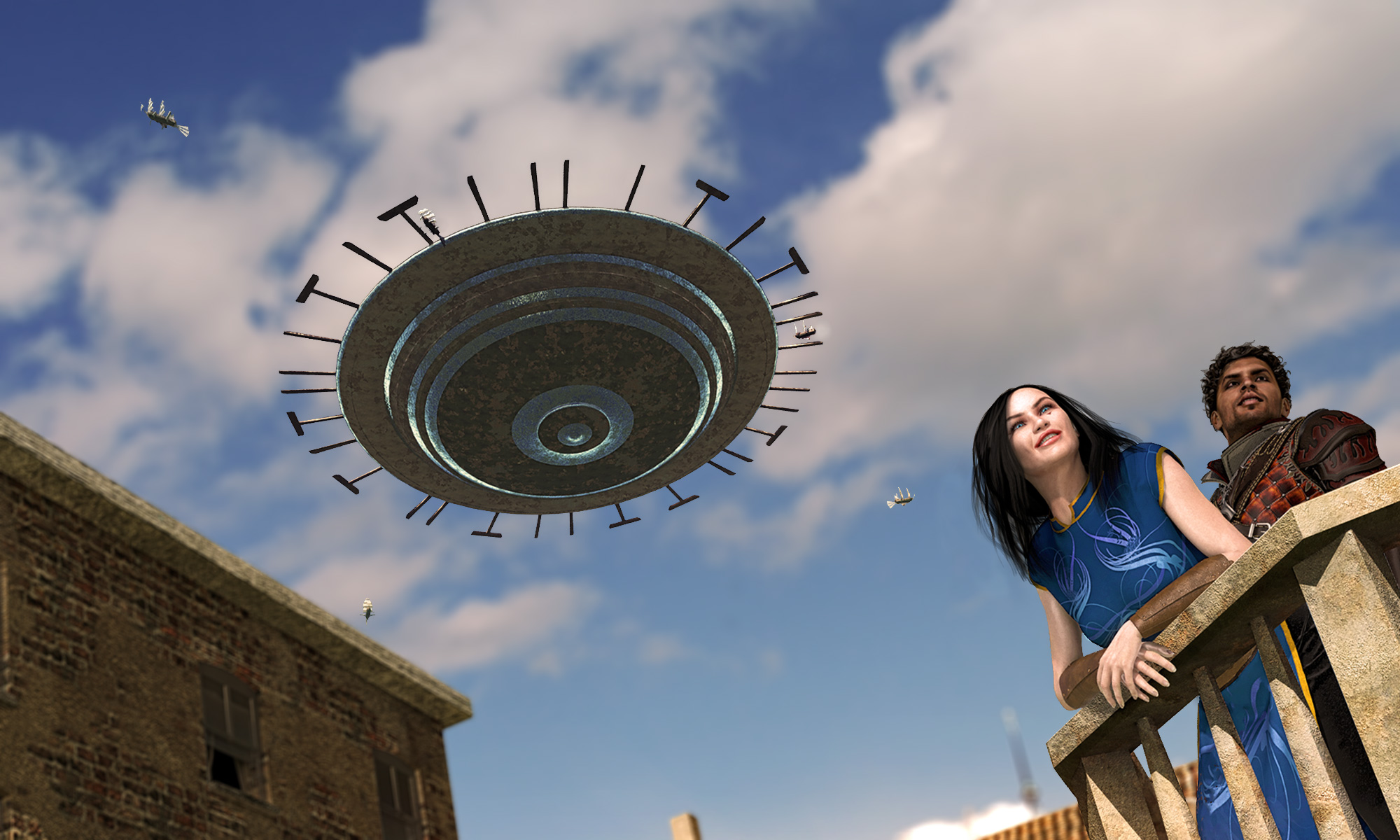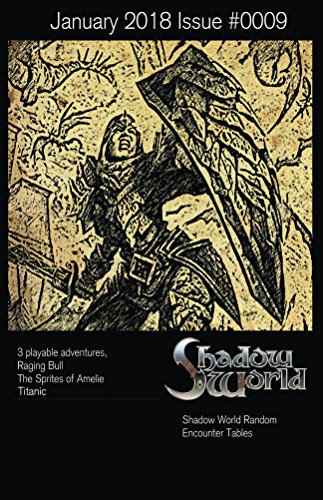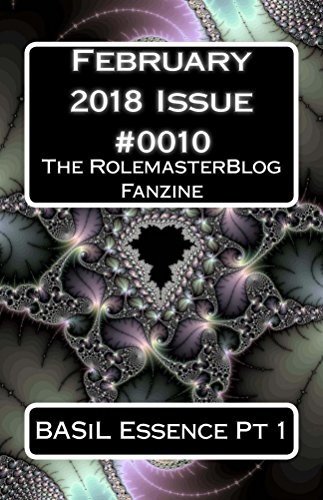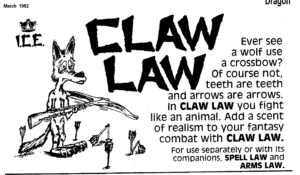
In a recent blog I reviewed some of the earliest ICE ads that were featured in the Dragon Magazine. Iron Crown’s two very first products were Arms Law, a drop in combat module for use in other game systems, and The Iron Wind, an expansive “generic” fantasy setting.
Later, ICE would formalize their modules into the Loremaster Series which would then morph into Shadow World. The Loremaster series consistested of 4 modules: The Iron Wind, The World of Vog Mur, The Cloudlords of Tanara and the Shade of the Sinking Plain. Two additional modules were advertised but never published: “Cynar: the Cursed Oasis” and “The Gates of Gehaenna”.
I thought I would do a “deep dive” analysis into the 4 Loremaster modules, starting with the Iron Wind. The Iron Wind was written/published in 1980, the start of the “Golden Age” of RPG’s and is a informative marker for the trajectory of Iron Crown Enterprises, it’s creative style and future product development. There are 3 basic versions: a b&w Parchment edition, a colored cover parchment version and then the final blue/green cover edition. As of yet, Terry hasn’t expressed an interest in a new updated edition, but this may be due to authorship issues as well. (If I recall, authorship was shared by, or predominantly done by Pete Fenlon).
There are a number of traditional online reviews of the Iron Wind, but I wanted to review the original 1st edition b&w parchment, offer my thoughts and identify any material changes that occur with each edition. But first off, let me say this: in my opinion, The “final, 3rd edition” Iron Wind is one of the best RPG adventure supplements ever produced. It was a self-contained sand box with a great mix of cultures, geography, structures, cities and plot narratives. While Judges Guild, Midkemia Press and others produced third party adventure content for D&D in the same period, these were drop-in products, lacking distinct and novel cultural frameworks beyond the “re-purposed renaissance style” or “Gygaxian racial tropes”. Too me, the lack of Orcs, Goblins and “True Elves” in the Iron Wind is pretty amazing given the Middle Earth roots of Iron Crown Enterprises and industry trends at the time.
With that said, the first and second parchment editions were a VERY stripped down version of the later 3rd version. While it did include the Priests Arnak and mention of the Unlife, there was no “Loremasters”, “Flows of Essence”, Navigators” or other elements that later defined the module series and ultimately Shadow World.
Front and Back Covers. The Iron Wind was published with 3 different covers: The B&W parchment, the “red” contrast parchment and the glossy paper green cover.
The parchment cover (top left pic above) depicts a mountainous terrain and a small citadel with a perspective of looking out of a small cave. It’s initialed “RB”, so I’m assuming that is Richard Britton, one of the ICE staff. The back cover is a large size Syrkakar Warrior also initialed “RB”.
The red parchment is a more fascinating scene. A (top right pic above), horned helm warrior twirls a morning star from a cliff edge while looking over a distance city–probably Syclak. Far in the distance a volcano is spewing an ash cloud and high above a red dragon is flying. There is so much dynamism in this art and once again captures the raw, gritty nature of The Iron Wind and early Rolemaster. It’s hard to say who the author is, but in the upper right border is a faint dotted PCF, so it appears that Pete Fenlon drew that cover!! This cover art was re-used in the third edition on page 23. The back cover is a colored Fenlon map of the area–interestingly it’s not an island, but a coastal region. This goes back to the Iron Wind being placed on the northern shores of Middle Earth.
The third edition had a full color picture done by Brian White in 1984. It shows 2 “barbarian” style characters fighting a demon that has seemingly burst from the ice of a frozen lake. A cool citadel is seen in the background. While I don’t like the Demon’s facial appearance, I think this is a great picture and I used it for inspiration in my game hook, Gauntlet on the Ice.
Maps. So let’s talk about maps. There is a definite progression of maps in these 3 products. Of course, Pete Fenlon’s map skills won ICE the Middle Earth license, and ME and Loremaster maps are some of the best ever published. The hand drawn “relief” style maps with key symbols are the GM’s best friend. Unfortunately, the 1st and 2nd parchment edition of The Iron Wind lacked the more polished Fenlon elevation maps found in the later Loremaster modules. The two color regional map that was included was for a whole different coastal geography! In the first two parchment editions, the Mur Fostisyr wasn’t even an island. Instead, the area is a coastal region. (I believe it was meant to be a northern coastal area of Middle Earth).
Content. Both parchment editions have the same material, which again, is quite sparse compared to the final 3rd version. Basically these two versions detail 6 locations, a section on the Iron Wind and 4 cultures. There are a few maps in the middle of the book and some scattered supplementary info: a weather chart on page 37, 2 small tables of herbs and poisons on page 43, food and lodging prices on page 47, and a “master military chart” on page 55 called “Basic Warriors of the Mur Fostisyr”. So right there you can see the primal DNA of future ICE modules, both ME and SW.
Narrative. Almost all of the books narrative is given via a storytelling device by Elor Once Dark. While those parts were included in the 3rd edition, in the 1st & 2nd it’s the entire “voice” of the product. This gives the product a more distinct and raw feeling. It reminds me of the voice over narration found in Conan the Barbarian–but that movie came out in 1982 and this product is dated to 1980.
Languages. One thought on “naming conventions”. The Iron Wind established a naming convention using word construction and consonant use that lends itself to setting depth. Check out these place names found in the Iron Wind : A-Arnaar, Uda Tyygk, Aalk Gaath, Taurkytadl. A mouthful certainly, but conveys a a sense of history and realism. We are used to this type of naming conventions from Terry’s subsequent work in Shadow World, but in 1980 it was unusual to see place names that were different from D&D standards: i.e. Greyhawk, Black Keep, Cross Fell, Hommlet etc.
In the first two parchment editions there is a small section on the Ky’taari. The third edition adds language notes on Syrkakar and expands the Ky’taari dictionary. Later Loremaster and SW modules continued building upon this foundation with language notes on Iruaraic, Kugor and others.
Citadels and Cities. Let’s get to the “meat” of the module–cool floor plans of amazing citadels. This is an area where Terry really shines and the Iron Wind is no exception. A couple of thoughts. First, all of the floor plans are “grid-less” (no grid paper background)–a significant different from D&D modules. This might be a subtle change, but lends a certain authenticity to the floor plans. Second, the Iron Wind established a more minimalist approach to room description. There are no “narrative boxes” and many of the room descriptions can be quite terse. For example: 16, 18. Offices. Of the chief librarian. Chairs? Desks? Luxurious? Who is to say! So while you have cool structures and floor plans, they leave a lot of unknowns for the GM to work out. Last thought–each citadel has a exterior drawing which is a great GM tool and helps with understanding the spatial aspects of a building or city. It’s nice to see a exterior view actually match the floor plan!
The parchment editions had 6 citadels/cities, plus a map of Syclax. The 3rd edition had the 6 citadels, a newly designed Fenlon map of Syclax plus Tharg Jironak (Tower of the Astrologer).

A-Arnaar. The High Temple of the Ky’taari. Parchment editions only had the lower hall layout. 3rd edition added the “upper hall”. There is a short narrative in the parchments that is expanded upon in the 3rd edition. Interestingly, both refer to the “master orb of the seeing stones of the Ryaani). Not sure if I missed who/what the Ryaani are, but this sounds like the basis for the Ilsari Seeing Stones established in later SW canon. Both had an exterior of the building, but I can’t tell who did the drawing.

Kaldaraak-Vaar (Dawnwaters Edge). Interestingly, both parchments and 3rd edition refer to the “master orb of the seeing stones of the Ryaani. Not sure if I missed who/what the Ryaani are, but this sounds like the basis for the Ilsari Seeing Stones established in later SW canon.

Uda Tyygk. One of my favorite RPG fortresses of all time! Not only is it a very “Bond Villian” style mountain lairs, it’s the home of the Udahir who fly giant birds. The floorplans were cleaned up from the parchment versions to the 3rd edition but none of them came with any floor plan key; instead the major areas were labeled on the map. The parchment versions did include one extra drawing of the “water entrance to the Uda Tyygk” that was left out of the final version.

Taurkytaal. This is the fortress of the Demon-Lord Astaur. This is a great stand-alone fortress with clever features: teleport thrones, retractable bridges and a “elven seeing stone” and cool magic items. There was some small changes to the layout from the parchment to the 3rd edition; basically rooms #28 & #28 vaults were relocated. There is mentions of Ryykaar the Mage and Darath but no stats in the parchment editions but they are stat’ed in the 3rd edition NPC section.
One last item of note. At the end of the section there is a small passage, “The Texts of Arduvaal of Vraniis”. It describes: “…and of four Pales were demons made, the first being the most strong and fierce, and the fourth the least in might”. For those familiar with RM, this was flipped with the 1st Pale being the weakest. This was changed for the 3rd edition.

Aalk Gaath. Home of the “Dragon Lord”. Here, we have a major deviation between the parchments and 3rd edition. In the parchments this citadel is the Fortress of Dread and home to Muul Chort, the White Dragon. Obviously the Dragon Lord was changed to Oran Jatar in the later edition (and Shadow World. Confusingly, room #6 was left as “the forges of Muul Chort” in the 3rd edition. An oversight I presume. This is also the home to the Priest Arnak of Gaath and Athimurl so a pretty dangerous place!!!

Var Ukaak. Let’s see, a Dragon Lords citadel, a Demon-Lords citadel and now a tower of the Susymog an Ordainer!!! This Mur Fostisyr sure is a dangerous place! There was additional rooms added in 3rd ed. and the treasury gold was reduced from 50,000 gp to 5,000!!! Oh, and that skull at the top of the tower?…glows with a red light that can be seen for miles.

Tharg Jironak. This citadel was NOT included in the parchment editions and is the home of a ex-navigator. This is a very interesting place, with many “Lords of Essence” features like laen doors/panels, exotic marbles, mirror mazes, glass tubes that hold people in suspended animation. The tower is “ancient” and made using powdered stone and “huge molds and forms” and glazed giving it a obsidian appearance. The whole thing is odd, whimsical and very cool.
Art Work. The 3rd ed. is a much more complete and polished version of the original parchments and for the most part, contains everything in the earlier editions and expands upon it. There are however, a few pieces of art that never made it to the final version:




So there you have it! Certainly the 3rd final version of the Iron Wind is superior in every way. It’s more professional, expanded with full stats, it has Fenlon’s colored elevation maps and a cool section of magic items in the back. However, the parchment editions have their own charm. The fortresses and layouts are among the best of their time, the cultures are unique and interesting and the bones of Shadow World are clear to see.
There is a ton of usable material in any edition. pdf’s are available to purchase at rpgnow.com HERE. A great value for $5.
Next deep dive…the “unusual” World of Vog Mur…
